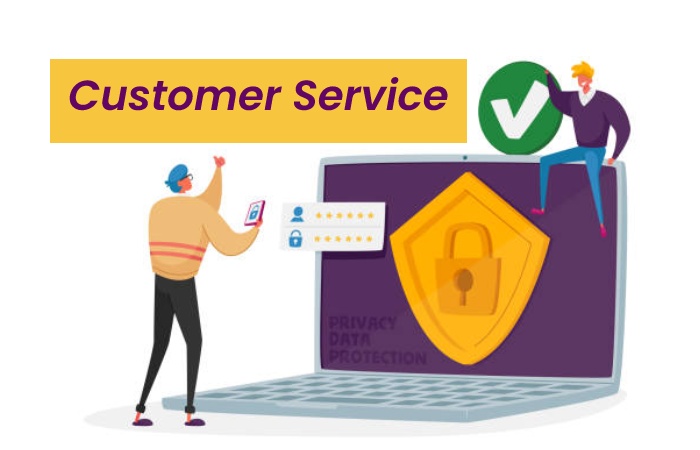Customer Service and Contact Centre – This article briefly describes the customer service and contact center. It shows you the importance and main vital elements of both the fundamentals.
Customer Service

Customer service is the help you offer your customers — both when they purchase and use your products or services — that assists them with having a simple, agreeable involvement in your brand. However, customer service is more than tackling a customer’s concerns and shutting tickets. Today, customer service implies conveying proactive and prompt help to customers on their preferred channel — telephone, email, message, visit, and that’s just the beginning.
Customer service is vital to such an extent that it is currently experiential as a strategic capability for organizations across businesses. In addition, 3/4 of specialists say their organization sees them as customer supporters and brand ambassadors.
Importance of Customer Service
- In a single word: maintenance. Happier customers are bound to keep working with you. It helps with your primary concern. It’s more affordable to keep current customers than to draw in new ones.
- Customer service is a differentiator that separates your brand from rivals that offer comparative products or services.
- Service groups do not just respond to questions; they make each experience customized to the customer. 80% of customers say that an organization’s background is as significant as its products or services.
- In the meantime, frustrating customer experiences add to the stir. So many customers will leave a retailer after three terrible experiences, for instance.
- Extraordinary customer service is significant for your brand reputation, as well. Yet, customers rush to impart negative experiences to the majority online.
Critical Elements of a Customer Service
- Customer service is the collaboration between the purchaser of an item and the organization that sells it.
- Excellent customer service is essential to business achievement, guaranteeing each customer’s brand dedication.
- Recent innovations have focused on robotizing customer service frameworks, yet the human component is sometimes crucial.
Contact Centre
A contact center is a central fact from which organizations deal with all customer cooperation’s across different channels. Their essential role is to offer customers productive and compelling specialized help, customer service, and sales help.
Contact centers commonly incorporate at least one call center; however may integrate likewise different kinds of customer contact channels, including messages, webchats, and social media cooperation’s. Similarly, organizations frequently coordinate contact centers with customer relationship management (CRM) strategies.
Importance of Contact Centre
- Contact centers are filling in importance, as customers progressively anticipate that organizations should be reliably accessible on different channels, not right via mobile.
- Contact centers adopt an omnichannel strategy, empowering them to refine customer service, increment productivity, and further develop bits of knowledge into customers’ ways of behaving and needs to make better customer experiences.
- Usually, contact centers incorporate specialists who handle omnichannel customer support, including calls, emails, visits, voice-over IP (VoIP), and site support.
- Contact centers are like call centers yet go past basically dealing with calls to arrive at customers on their favored channels.
Critical Elements of a Contact Center Incorporate the Following:
- Automatic call distributor (ACD) frameworks, which empower contact center specialists to expand the number of calls taken while keeping a positive customer experience (CX);
- Ongoing reports, which empower contact centers to notice and examine specialist execution and customer satisfaction continuously across the different channels used;
- Scripts, which give specialists a structure to give callers viable help and to create sales; and
- Interchangeable tasks imply specialists who offer contacts and items can cooperate while keeping up with individual stations.
Conclusion
Hence, customer service and contact centre give customers facilities and effort for the product they purchase from their firm. However, they vary in the correspondence channels they use. For example, call centers use one track – the telephone – while contact centers use a few stations. It is because call centers arose in a period before computerized media.
Also Read – CRM Tools and Strategies With Its Benefits


